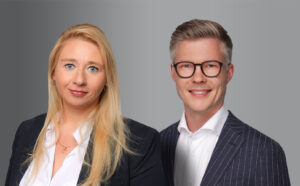
– System Integration
Does Greenfield top Brownfield - or vice versa?
- •
- Hans-Jürgen von Henning
– abstract
Multiple opportunities
A Greenfield approach to implementing product innovations and new business models does not always make sense. Brownfield approaches ("building on existing systems") also open up numerous options for insurers - with a wide range of opportunities.
– Fast Lane
In this article you will learn:
Greenfield as a "Silver Bullet": Is this approach really the simple solution to a complex problem?
The Greenfield model has become popular with insurance companies: The approach is used to introduce new product ideas and business models together with new, modern software systems. And it does so independently of existing application landscapes. But Greenfield quickly reaches its limits. Brownfield approaches also offer solutions for new products and business models.
In fact, insurance companies often establish subsidiaries for a Greenfield model in order to achieve organizational independence. These subsidiaries are thus free of legacy burdens such as entrenched, rigid processes and inflexible legacy systems that are far too expensive to develop and operate. But do they have to take a Greenfield approach? And above all: Why? Doesn't this also have negative effects?
Hans-Jürgen von Henning
Hans-Jürgen von Henning is an integration expert and Chief Product Owner in the Finsure Integration dock at IKOR
"Individual surrounding systems can be specifically replaced by new solutions in order to evaluate them as an overarching target system"
Creating an organizational framework
To implement new business models, it is necessary that their development is not stalled by external influences. An incubator within the company or a company spun off for this purpose can create the necessary organizational framework.
One possibility is to form internal start-ups that can develop completely independently. This also applies to innovative products which cannot be implemented in the existing technical and specialist infrastructure, or which are very difficult, slow and expensive to implement. Background: Existing systems may not be able to map new product structures. However, a possible alternative to an independent spin-off is also a new brand: Ideally, it successfully differentiates itself from existing brands and offerings on the market, opens up niches and thus creates new market prospects.
The way forward - for all
To develop new business models or product ideas , companies need optimal system support. Organizations should be able to exploit all potential from day one. Complete digitalization with a high dark processing rate, lean internal processes and cost-optimized operation is mandatory here.
But does a company have to build a completely new application landscape for this? In most cases, it is undisputed that new core systems are needed for application, policy and claims processing. However, insurers should ask themselves whether they need to rebuild all peripheral systems and integrate them with the core systems at the same time.
Whether the company's existing inventory is also relevant in the context of the new business model orproduct is another important question. After all, existing customers can be valuable - with a view to overarching customer relationship management (CRM), customer value and sales organization information for new products and business models.
As an alternative to a Greenfield model, it may make sense and be valid to introduce new core systems and integrate them with existing peripheral systems. Different aspects are important here:
Core systems: Minimize risks, introduce lean solutions
- Insurers can introduce new core systems to gain initial experience with an isolated (new) product. At a later stage, existing products can be successively migrated to these systems ("rip & replace"). This helps to modernize the application landscape of an insurance company step by step. It also effectively limits the risk involved in introducing new core systems. However, only systems that are also viable in the final expansion stage can be considered for this.
- If this is not the goal, lean solutions come into consideration : Depending on how complex the requirements are, the costs for development and operation can be minimized. If the new business model or the innovative product idea cannot establish itself, then the sunk costs, the irreversible costs of failure, are also limited.
Transition systems: Use proven solutions, evaluate new ones
- The integration of peripheral systems is one of the most complex and cost-intensive measures in the introduction of new core systems.
- The selection of the conversion systems is also time-consuming and/or associated with high risks.
- So why not use proven peripheral systems (partners, CRM, input, output, archive, collection and disbursement, commission, broker management, etc.)? Individual peripheral systems can also be replaced by new solutions in order to evaluate them in the same way as the core systems as an overarching target system.
– Conclusion
Mix it!
A mixed Greenfield-Brownfield approach opens up considerable potential for the entire organization on the way to a consolidated, modern application landscape. This thus implements the overarching goal of digitalization and process optimization in manageable steps.
The integration architecture plays a key role here. Its key success factor is to effectively decouple the systems. This enables a gradual transformation with several transition architectures: from existing systems to flexible target systems.





